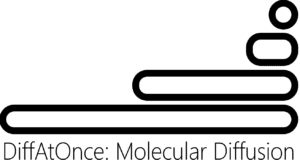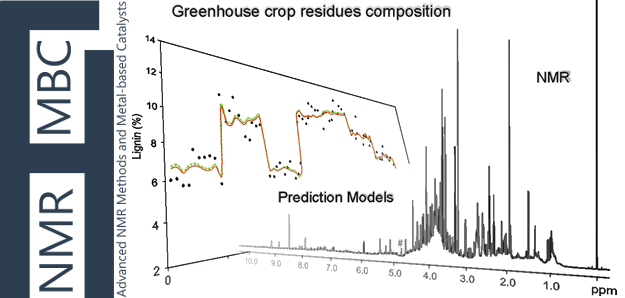Solutions
Prediction Models for Hemicellulose, Cellulose, Lignin and Extractives in Greenhouse Crop Residues by Multivariate NMR Analysis
Here we have introduced for the first time the use of multivariate NMR analysis in the development of prediction models for the determination of hemicellulose, cellulose, lignin and extractives. These results demonstrate that discriminant buckets coming from specific metabolites in combination with linear models provide a useful and rapid nondestructive tool for the determination of cell-wall biomass composition of greenhouse crop residues. Regularized linear regression methods have been also applied to avoid overfitting, producing improved models specifically for lignin and cellulose determinations.
-
Example 1
- Tomato
- Lignin measured value(%): 5.73
- Cellulose measured value(%): 22.88
Hemicellulose measured value(%): 15.41
-
Example 2
- Watermelon
- Lignin measured value(%): 9.7
- Cellulose measured value(%): 15.46
- Hemicellulose measured value(%): 19.06
DiffAtOnce: Molecular Diffusion
DiffAtOnce is a software package able to obtain quantitative self-diffusion data in a very straightforward manner allowing the calculation of radii including different molecular models which is not only restricted to spheres. The program works with any conventional or “home-made” sequence, and allows the introduction of different standards, viscosities, gradient-pulse shapes, sequences and much more.
Pulsed field gradient diffusion NMR is now an important tool for many chemists interested on unraveling problems in complex mixtures, molecular volumes estimation, hydrogen-bonding interactions, or aggregation states issues.
Many major manufacturers of spectrometers offer different hardware and software implementations to acquire and process such data, but in such software’s the processing of the data is hardly manageable and need to use additional programs in order to obtain D-values and/or hydrodynamic radii.
We present herein a new software package able to obtain quantitative self-diffusion data in a very simple manner allowing the calculation of radii including different molecular models such as sphere, cylinder or ellipsoid.
The program works with any conventional or “home-made” sequence, and allows the introduction of different standards, viscosities, gradient-pulse shapes, sequences, etc. permitting the exportation of the data as postcript, pdf or excels formats.

NMR Robot Rotor
Nuclear Magnetic Resonance (NMR) is a well-known technique in the field of Chemistry. One of its applications is the structural determination of reactive intermediates in solution. A common task is the monitor of such species through NMR which comprises the mixing of reacting liquids and/or gases contained in an NMR tube, usually of J-Young type.
This methodology makes necessary to control the mode in which the tube is moved, and therefore the reagents are mixed, in order to achieve a homogenous and uniform mixing. In this work, a novel robot rotator for NMR tubes has been developed which enables the rotation of the tubes under circular and pendulum movements.
Protection of the tubes is achieved by means of a polymer adaptor which is designed to include a protector case made of thermoplastic elastomer. Both the adaptor and the protector are interchangeable according to the standard tube dimensions considered by the main manufacturers.
NMRMBC Viewer
The new NMRMBC Viewer is a simple tool for visualizing NMR spectra.
It is now availabre for free download.
MATLAB NMRViewer
NMRMBC presents a student’s project named NMRviewer, aimed to visualize transformed and processed 1H nuclear magnetic resonance (NMR) data in a friendly and interactive format, as a tool to incorporate programming contents in the chemistry curricula. Using the MATLAB GUIDE, the projects explains how students can build an NMR viewer software program via three main features: a display window, an open file dialogue, and a stack plot option.

